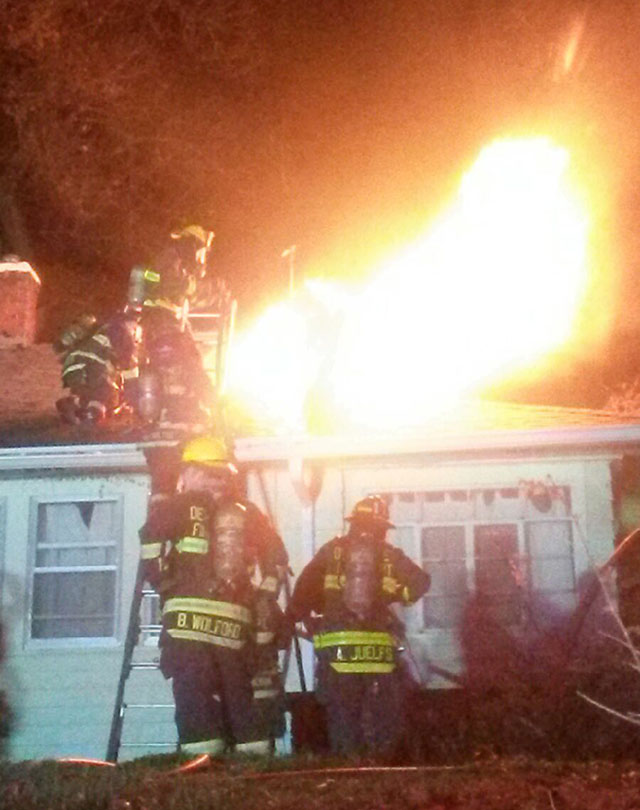
I received an email from a close friend of MTI – full-time firefighter, and fit – about a fire his crew fought in a tiny house …. and how physically demanding this “average” fire was. His note is below…
– Rob Shaul
Rob –
We had a good house fire this morning. Nothing to make front page news, but it was a dirty little bread-and-butter job that really represents what we do here in the Midwest and probably across the nation on a regular basis.
We were banged out at 2 am for a 1.5 story, single family dwelling fire in an older residential neighborhood. It was in the upper 40’s and damp. Most of the responding companies had been busy during the previous 19 hours since the shift began.
We had to advance an attack line into a heavily involved, half-story attic, with fire confined behind knee-walls. The conditions were such that we had to push and retreat three times before extinguishing the fire.
Extreme heat and zero visibility made it the proverbial “knife fight in a phone booth”. We repeatedly encountered enough heat to singe our necks and ears through our hoods.
Flowing 150 gpm into the superheated gasses provided temporary relief but the inability to reach the seat of the fire drove us back onto the stairs several times.
After the second advance into the attic, I had to rotate nozzlemen because the initial nozzleman was overcome with nausea and needed to leave the building. A second nozzleman and I pushed and retreated once more before a fourth push along with coordinated ventilation and aggressive opening of the first-floor ceiling by additional companies darkened the fire.
The second nozzleman (who had been supporting the initial two pushes from behind) had exhausted his air supply once the fire was under control. We exited the building roughly 15-20 minutes into the operation. At this point, I was feeling a level of exhaustion that mimicked an intense event lasting 4-6 hours, in high ambient temps.
In this short attack, the fire reduced three well-conditioned firefighters to near uselessness, albeit temporary.
The initial nozzleman is a fit firefighter in his late 20’s. His training is traditional weight lifting but he is lean and quite strong. He did somewhat recover from nausea but did not return to 100%.
The second nozzleman is an avid ultra-marathon runner and part-time HS wrestling coach in his mid-40’s who recently returned from a trek Everest base camp. He is regarded as one of our fittest members and he dumped a 45min bottle in less than half that time. He continued to move well but was tired.
Personally, I’ll admit to a recent bias toward strength and hypertrophy in my training but still, consider myself to be quite mission ready. I was completely broken off after exiting that building.
I’m dumping this in your lap simply to provide anecdotal information about what we do. I chalk a lot of this up to being loaded with 70lbs, in a cramped attic, while pushing/pulling a charged hose line into very high temperatures. I also suspect that a combination of sleep deprivation, a lack of nutrition (no-one had eaten or hydrated in hours) and a considerable adrenaline dump played a role.
This fire was tricky, but not at all extraordinary. Tight spots, high heat, and long shifts are commonplace. We get by with a single coordinated advance more often than not and can rest and congratulate ourselves. But routine fires do get sticky and seemingly fit firefighter can quickly find themselves overtaxed by “routine” jobs.
It makes your work as a programmer/coach very difficult. I’m not even sure that I’ve given you anything useful or what you’re supposed to do with it but I figured you might appreciate at least some insight on how the job goes some days so you might have a clearer idea of who/what you’re programming for.
We were inside that attic when that photo was taken and could not see a thing.
– J
You Might Also Like MTI’s Urban Fire Fitness Assessment
